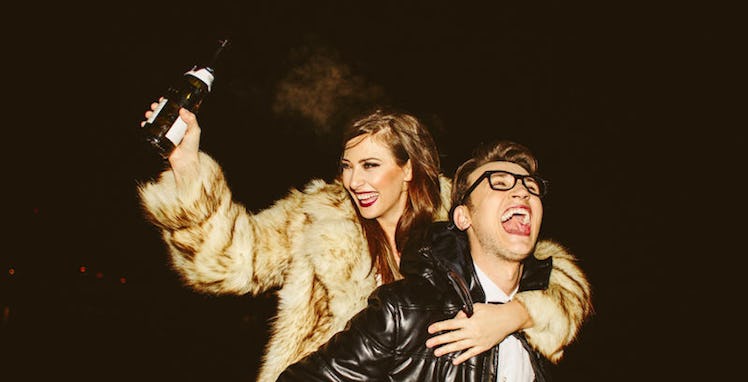
The Real Deal: Why The New Batch Of Inspirational Models Is Here To Stay
In an obituary published almost a week ago, The Wall Street Journal celebrated the life of Ford Model Agency founder Eileen Ford, who passed away at the age of 92.
Ford was credited not just for being a businesswoman so many years ago, when caring for a family was considered more important than helming a company, but also for launching the careers of many of the world’s first supermodels, who have since become household names — Christie, Lauren and countless others.
But while Ford might have played a crucial — if not the founding — role in helping to define the model standard, I’m not so sure that this is an overall positive thing.
In making Christie Brinkley’s endlessly long legs and Lauren Hutton’s angular cheekbones the gold standard to aspire to, Ford, certainly unwillingly, sparked a culture of deprivation and discontent that today’s models (and impressionable young girls and women) strive to embody.
The likes of Brinkley and Hutton were undoubtedly a different class of model, known for “quirky” features like a gigantic grin or a gap in her teeth as opposed to the now more common cocaine addiction or anorexia disorder.
However, as we’ve seen with Photoshop, a lot of the current breed of couture models are veering on the side of too skinny and sickly.
But while this unattainable standard has come to dominate high fashion, there’s been an undeniable kickback from frustrated women who want the images they see purveying clothes and other items to be reflective of them, or at least positive photos of strong, empowered women.
With greater frequency, we’re seeing women who might not fit the mold for the “traditional” model body and beauty put themselves out there (largely thanks to social media and the positive comments these brave women have received from viewers).
The beautiful Bethany Townsend, for example, had high ambitions to be a high-fashion model, but her Crohn’s disease — and the colonoscopy bag that was fitted to her body at all times — seemed to get in the way.
But after the 23-year-old Brit put photos of herself on Instagram and Facebook, an online community urged her to follow her passion and pursue the modeling career she always wanted, and she now is.
In similar examples of women balking at the super-skinny and all-too-perfect model stereotype, one women’s lifestyle magazine featured a female who had suffered burns on 64 percent of her body.
Perfection was clearly not the most important trait to this magazine, when the cover girl had an inspirational and uplifting story of survivor Turia Pitt.
And although a recent study highlighted the difficulty that larger women face, citing that they endure an average of three body-shaming comments a day, the current environment is arguably becoming more inclusive to plus-size models.
Although there’s still much progress that must be made, there are increasing instances of plus-size models booking cover shoots, or showing they’re just as sultry as Sports Illustrated models with scantily-clad beachside photo shoots.
It’s important to note, however, that these improvements don’t appear to be industry-led. For the women deemed to have features that appear contrary to the current unrealistic beauty norm, it’s clearly still an uphill battle for the establishment to recognize them as “beautiful” and worthy of a campaign or coverspread.
While the fashion industry still might be largely comprised of the genetically-gifted, exorbitantly-wealthy bunch, there’s a calling of women who refuse to accept an alleged “status quo” that doesn’t accept them.
These women, like Pitt and Graham, are at the forefront of a more egalitarian movement, in which beauty is more honestly assessed by character and normal features than the “imperfections” of the likes of Cindy Crawford and Jenna May Jagger.
Because let’s be real, despite some news outlets’ interpretation of “unique” as a mole or a slightly flawed smile, the only outliers here are that these super-skinny super-humans are supposed to be the people we want to shape ourselves into.
These “unconventional” models, therefore, really aren’t alternative in any mainstream regard. Instead, they’ve become accepted and popular because they look like you and me.
They more accurately represent everyday people who have, after all these years, learned they have little in common with the picture-perfect people whose images inundate them.
We relate to this new breed of models because we are them.
If models are present to show us what items we want or how we want to look, then there should be a level of realism about them. No one is going to magically morph into Naomi Campbell overnight, no matter how hard they pucker up or slim down.
It’s better, and simply more sustainable, that we start to see women who we can actually relate to and emulate in healthier ways.
Real women make real role models — with way less self-loathing and way more positive impact.